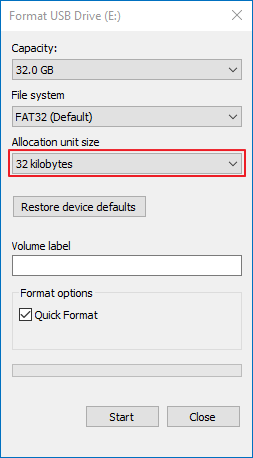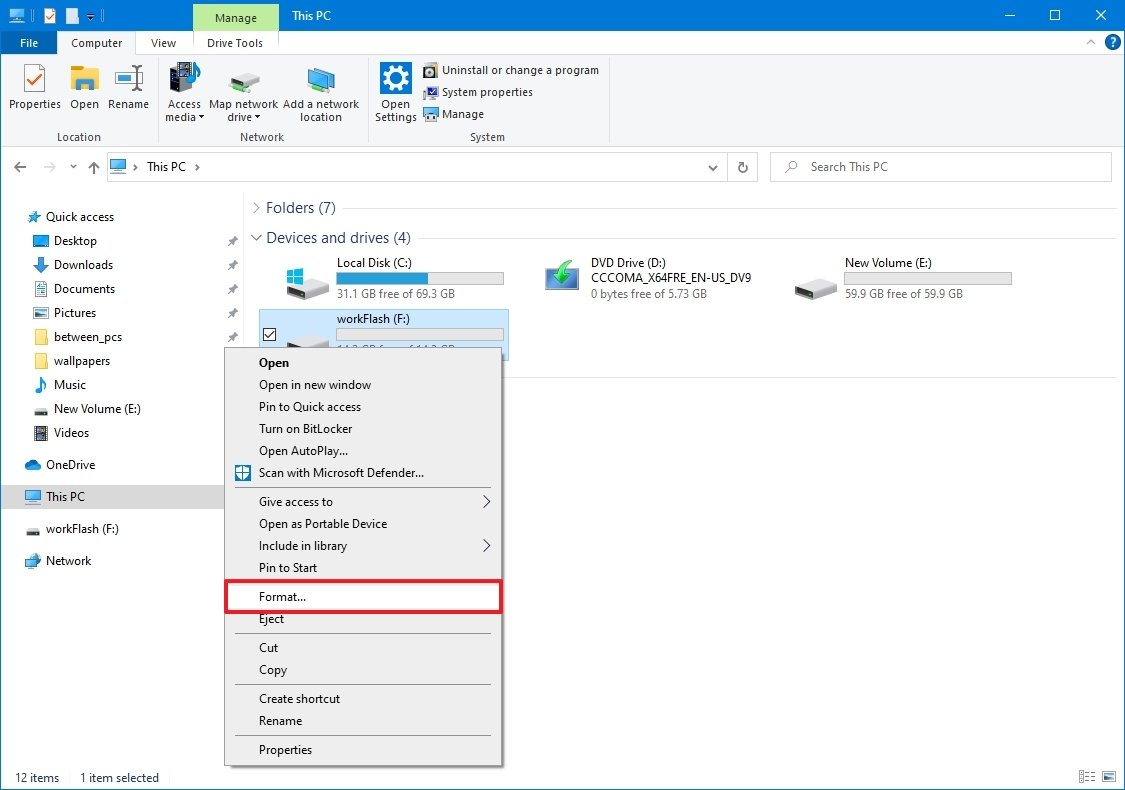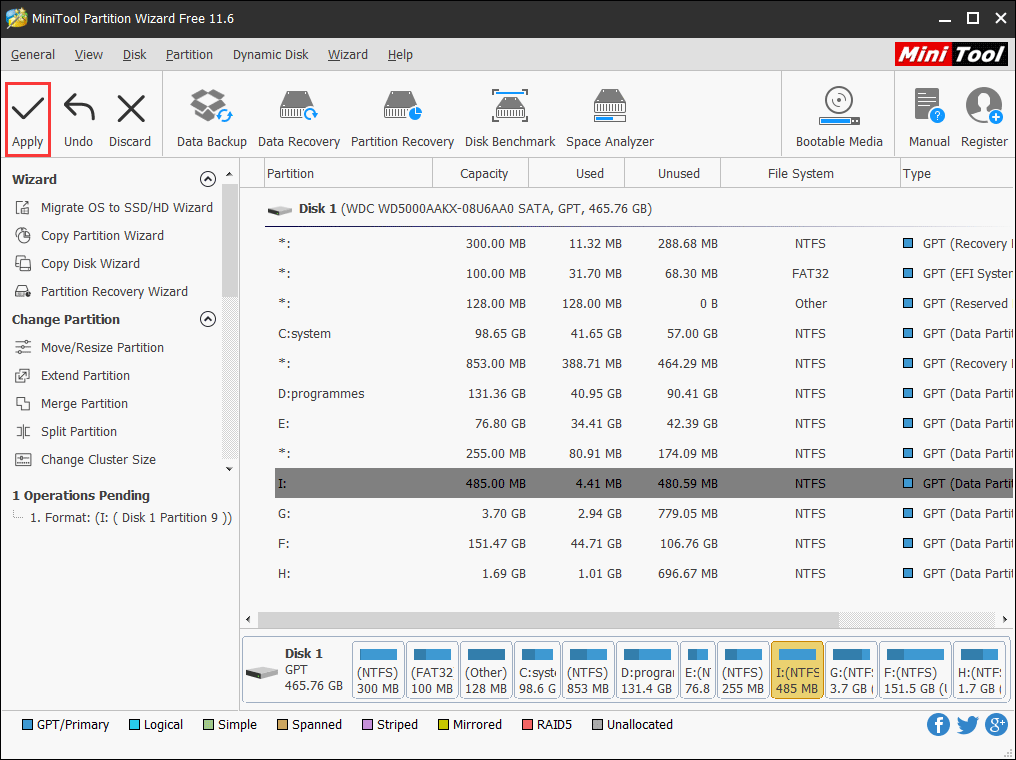

- #Format flash drive exfat allocation unit size full#
- #Format flash drive exfat allocation unit size Pc#
- #Format flash drive exfat allocation unit size mac#
- #Format flash drive exfat allocation unit size windows#
Want to read more answers from other tech-savvy Stack Exchange users? Check out the full discussion thread here. Have something to add to the explanation? Sound off in the the comments. To find out what the cluster size is on an existing disk:
#Format flash drive exfat allocation unit size windows#
For a windows boot partition I use the Windows default (which is 4K for any NTFS drive smaller than 16TB). 16x the block size means 1/16th the number of blocks to keep track of.įor a media disk where you photos, music and videos are stored, every file is at least 1MB I use the biggest AUS. With a 64K AUS there are a lot fewer blocks to keep track of and less fragmentation. With a 4K AUS the data needs to be split over two blocks – and they may not be together so you get fragmentation. Let’s say you have a 3K file which needs to grow 2K. Instead think about how the OS uses space. However, as Jonathon points out, modern drives are massive and a little wasted space is not worth fussing over and this shouldn’t be a determining factor (unless you are on a small SSD).Ĭompare 4K vs 64K average case waste (32K-2K = 30K), for 10,000 files that only comes out to 300,000KB or around 300MB. When using between macOS and Windows, drives should always be formatted on macOS because not all Windows allocation unit sizes (block sizes) are supported by. So 4K wastes 2K per file and 64K wastes 32K. The average space wasted per file will be half the chosen AUS. In terms of space efficiency, smaller allocation unit sizes perform better.

Suggest you just keep the default.Īlso keep in mind that the majority file are relatively small, larger files are large in size but small in units.Īndrew expands upon Jonathan’s answer with: If you have lots of large files, keeping it higher will increase the system performance by having less blocks to seek.īut again, nowadays hard drive capacity is getting higher and higher it makes small difference by choosing the right allocation size. your flash drive has 8 KB sectors and you format with 4 KB allocation units. If you have lots of small files, then it’s a good idea to keep the allocation size small so your harddrive space won’t be wasted. If no cluster size is specified when you format a partition, defaults are. Basically, the allocation unit size is the block size on your hard drive when it formats NTFS. If you are a “Standard User” by Microsoft’s definition, you should keep the default 4096 bytes. SuperUser contributors Jonathan and Andrew offer some insight. While the default setting is usually the best choice for most users, let’s dig a little deeper. Are there any guidelines that I might apply to other drive types? Should I stop poking around and just leave it at “default?” What should I choose for the allocation unit size setting? The options range from 512 bytes to 64K. This drive is mainly meant for storing media such as music and video. I’m formatting a 1TB external hard drive as NTFS. Is that a bad idea to use 4096 bytes for exFAT - keeping it the size that I'm used to using? Should I just stick with the default, 512K.SuperUser reader Andrew Keeton is curious about what exactly he’s supposed to put in the allocation section when formatting a drive. It appears that I could still specify 4096 bytes (not to be confused with 4096K) as the unit size if formatting it through DISKPART even though that option does not show when using the FILESYSTEMS command (or in the UI).
#Format flash drive exfat allocation unit size mac#
(How does Windows determine the default size for exFAT anyway?) The Mac will format it using 128K as the default, which is still a big difference.

I suppose with the lack of help from Nvidia on this topic, Id be safer to stick. That is a big difference! I'm not sure if I like that. Unless it is safe to change the cluster size to 4KB when formatting to exFAT.

When using exFAT, Windows uses 512K (524,288 bytes) as the default allocation unit size. In the past (and on another 2TB drive) I have always stuck with the defaults Windows has (NTFS & 4096 byte allocation unit size). Since this won't be used as a "working" drive, I'm not too concerned about speed.
#Format flash drive exfat allocation unit size Pc#
The main purpose of this drive will be to back up my files, and sometimes transfer them between my PC and Mac, so it will have many smaller files such as documents and photos, and larger files such as GoPro videos. Before I get into this, I do understand that a larger allocation unit size/cluster size is better for drives that will be storing larger files and read/write can be quicker as well while a smaller size can save space, but read/write may not be as efficient.


 0 kommentar(er)
0 kommentar(er)
